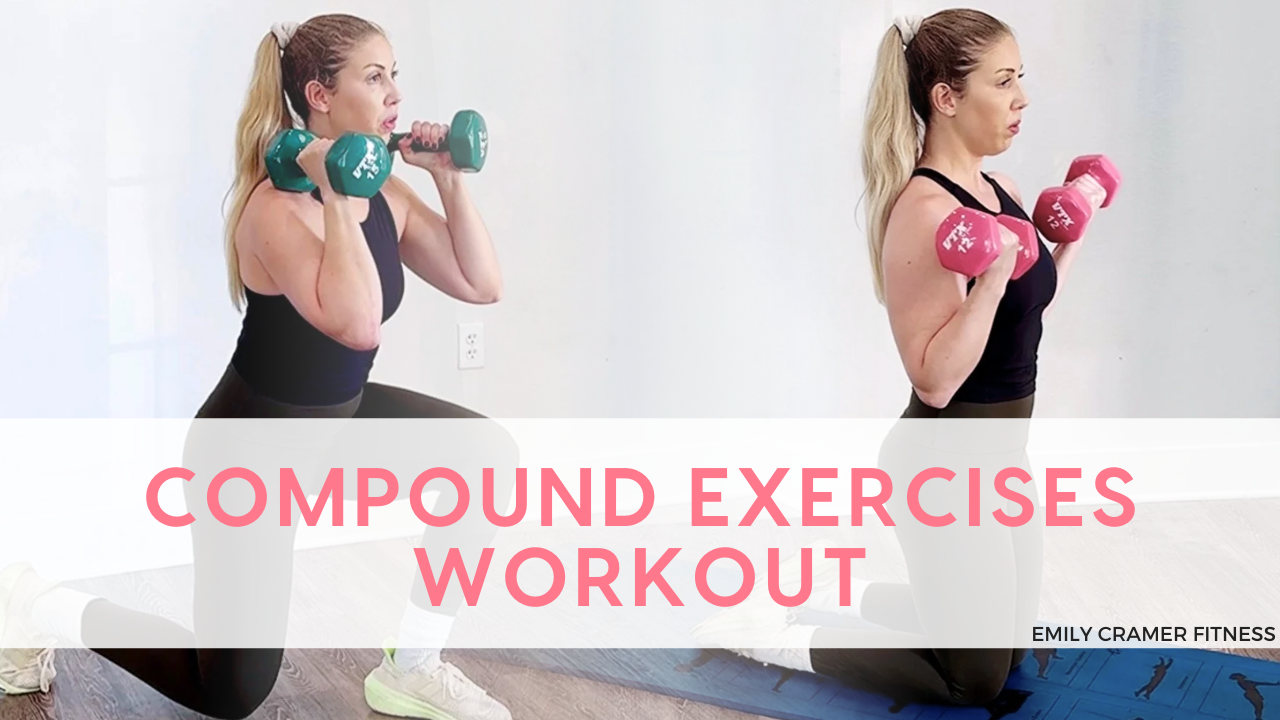
How to Warm Up & Why It's Important
Warming up and stretching matter.
And there’s a strategic way to go about it.
I used to try to get warm ups over with as fast as possible mainly because I get impatient and feel like it’s taking away from the real play time. BUT I’ve also learned the hard way through injuries that it’s key to your continued improvement.

Why is it important?
Warming up gets your heart rate up, increases your circulation, and raises your body temperature. All of these factors are important because they help prepare your body for exercise by loosening your joints and raising blood flow to your muscles. Warming up also prepares your body for very specific ranges of motion it will endure during exercise, thereby preventing injuries.
SO… how do we do it?

1. Start your workout with some light cardio to get the blood flowing. I’m talking LIGHT. Sometimes I get overly excited on the treadmill and it turns into full on high intensity cardio. This isn’t what we want. We want just enough to warm up the muscles and prep your body for resistance training.
An effective warm up could be 10 minutes on the treadmill, for example. I will generally start with 2-3 minutes walking, increasing the pace as time progresses and then move into a light jog for the remainder of time.

2. Stretch DYNAMICALLY. Static stretching has been shown to decrease your strength and power prior to you beginning your lift. Plus, let’s think about this logically - if I am about to perform a lift, the most effective way for me to prepare for that range of motion is to perform that same range of motion or a similar one with light (or no) weight.
If I am about to perform squats with a barbell, I will often prepare for the hip hinging range of motion with bodyweight squats. I then move into squats with only the barbell and slowly increase the weight as needed until I reach the weight I will use for my working sets. This ensures that my body is in the best condition possible to perform that range of motion with a significant amount of weight to push up.

3. Save your static stretching for the END of your workout. It will help get the blood flowing to the muscles worked as well as elongate the muscles and prevent injury. Because you’re holding a somewhat uncomfortable position for an extended period of time, I find that you’re less likely to overdo it and injure yourself post lift when the muscles are already warm.
Don’t skip your warm ups or your cool downs.
To be honest, they are always the least fun past of my workout but they are incredibly important to your body’s long term well being.
Body goals is to be squatting well into my 80’s so I’ll be here doing everything I can to stay injury free. Be diligent about your warm ups and your body will thank you.
So, one more time to summarize:
1. Light Cardio before you exercise
2. Dynamic stretching before your lifts
3. Static stretching post workout






